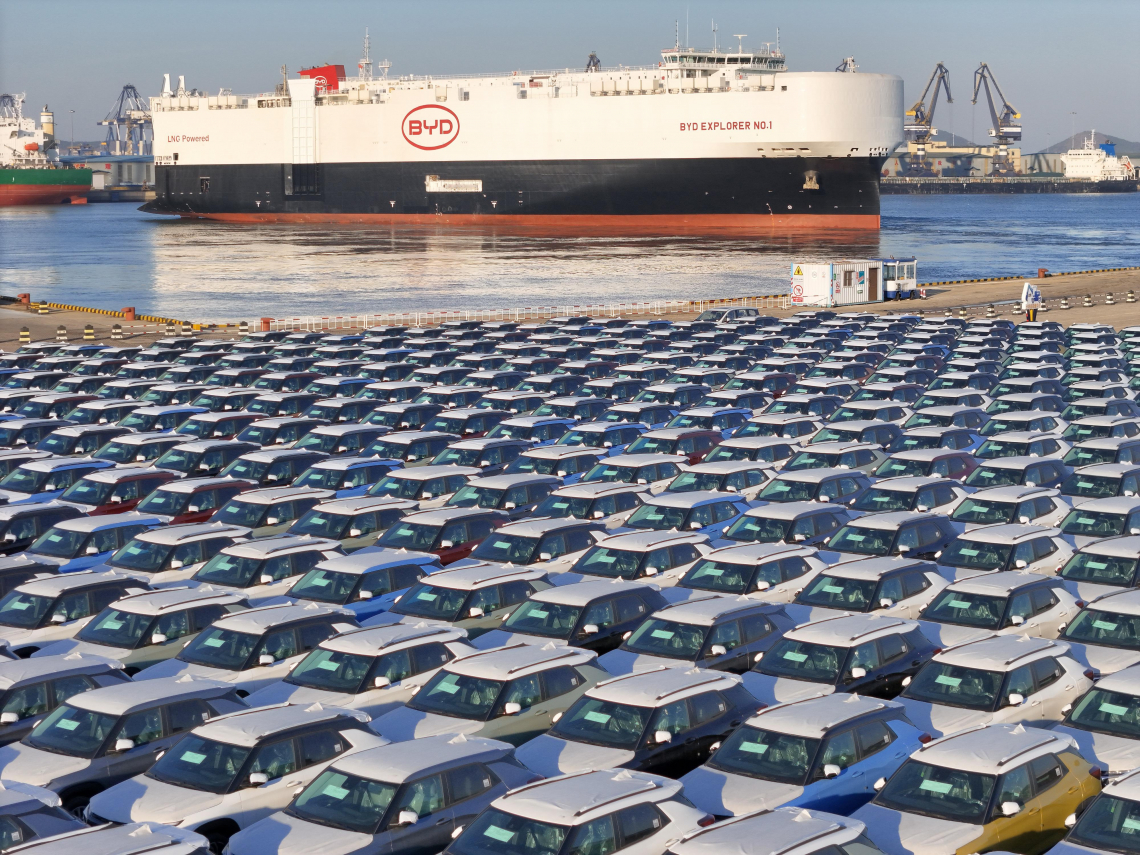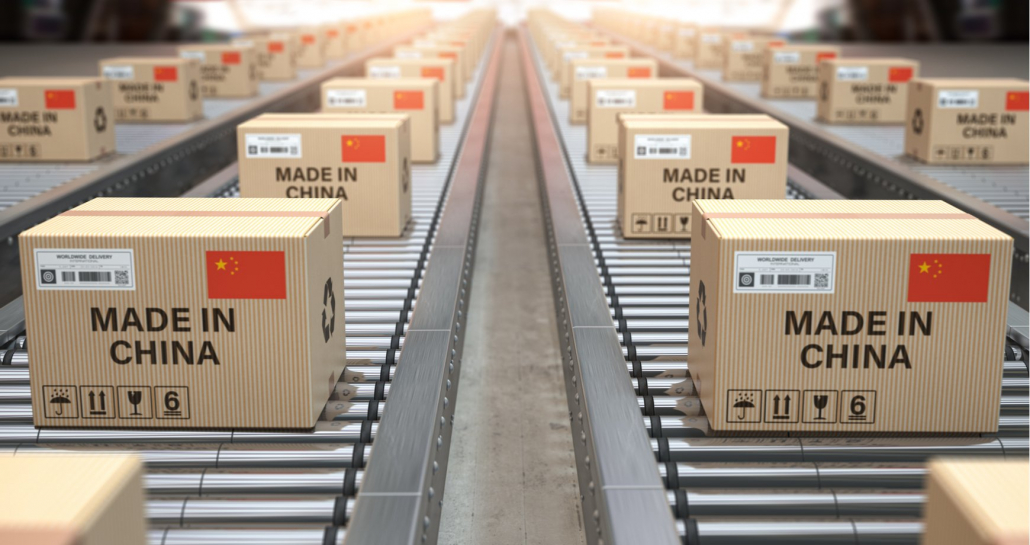Following the global pandemic, many countries experienced economic downturns, leading to a decline in auto exports. However, China is one of the few countries experiencing stable growth. It has surpassed Japan to become the world’s largest auto exporter and holds a key position in the global auto industry. Data from the China Association of Automobile Manufacturers shows that from January to June 2025, China’s exports of complete vehicles (including complete kits) reached 3.3368 million units, an 18.0% year-on-year increase; the export value reached US$59.396 billion, an 8.0% year-on-year increase. While the growth rate has slowed, overall performance remains strong.
A major auto exporting country generally meets two conditions: a well-developed industrial structure and strong production capacity, and a domestic market that is not so large as to overwhelm domestic production capacity. Strong exports and domestic sales indicate that China’s auto market has strong purchasing power and that its products have a strong global influence.

Major Regions and Countries to which China Automobile Exports Industry
Major exporting countries and regions for Chinese autos include Russia, المكسيك, Belgium, أستراليا, Saudi Arabia, the United Kingdom, Thailand, Spain, the United Arab Emirates, and the Philippines. These countries are widely distributed, encompassing traditional major auto-consuming nations as well as emerging markets. لذا, why are these distinctly different countries purchasing large quantities of Chinese cars?
- روسيا: Russia’s situation is particularly unique. Previously, Russia’s auto industry relied on Western investment, parts supplies, and partnerships. Due to the Russia-Ukraine conflict, many multinational automakers halted exports to Russia, leading to a supply shortage in the local auto market. Against this backdrop, Chinese automakers, able to maintain a stable supply, reaped the benefits and became key suppliers to the Russian market, filling a gap in the market.
- Australia and Southeast Asia: The China-Australia Free Trade Agreement and the RCEP agreement between China and Southeast Asian countries have enabled Chinese automakers to enjoy lower tariffs in these regions. This gives Chinese automakers a significant price advantage, enabling them to surpass European and American brands and attract a large number of consumers.
- أوروبا: As a traditionally large auto-consuming nation, Europe has long been a formidable competitor in the global auto industry. However, with increased policy support for new energy vehicles in European countries, Chinese new energy vehicles are gradually gaining the upper hand in terms of cost-effectiveness and technological advantages. In particular, Chinese new energy vehicle exports to countries like the UK and Belgium account for a significant share of these markets.
- المكسيك: As the world’s seventh-largest automobile producer, Mexico possesses significant manufacturing capabilities, but Chinese automakers are eyeing the potential of the Mexican market. Mexico is located in the heart of the North American market. By establishing production bases in Mexico, Chinese automakers can leverage the advantages of the North American Free Trade Agreement and enter the US market with zero tariffs.
- Middle East Market: Chinese automakers have conducted extensive research in the Middle East market, improving vehicle safety and performance based on local driving habits and climate. على سبيل المثال, Saudi Arabia’s high temperatures and humidity require vehicles with enhanced cooling and cooling systems, such as specialized accessories for Hajj vehicles and optimized cooling and cooling systems. Their product offerings cover Hajj vehicles, customized school buses, high-end group buses, and VIP commercial vehicles, providing Chinese automakers with an opportunity to enter this market.

Leading Advantages of China Automotive Industry
1. Dominance in the New Energy Vehicle Market
China has consistently maintained the top position in global production and sales of new energy vehicles. By 2024, the penetration rate of new energy vehicles will exceed 38%, far exceeding that of European and American countries. Brands like BYD و Xiaomi have achieved breakthroughs in both product performance and price through technological innovation and large-scale production. على سبيل المثال, the Xiaomi Yu7 has won market recognition for its long battery life, fast charging, and intelligent features, driving Chinese brands’ share of the global new energy vehicle market to over 60%.
2. Core Technology Breakthroughs
Chinese companies dominate the world in power batteries, motors, and electronic controls. The solid-state batteries and ultra-fast charging technologies (مثل “1-second 2-kilometer” charging speed) developed by companies like CATL and BYD are at the forefront of the world. Huawei and جيلي are redefining next-generation automotive standards with their technological output in areas such as intelligent driving and digital chassis.
3. Completeness of the Supply Chain and Cost Advantages
China boasts the world’s most comprehensive new energy vehicle supply chain, with highly coordinated efforts from raw materials to vehicle manufacturing. This vertical integration model (على سبيل المثال, BYD manufactures 70%-75% of its components in-house) reduces costs and enhances supply chain stability, enabling Chinese vehicles with comparable features to be priced 15%-30% lower than joint venture brands, offering a significant price-performance advantage.
4. Accelerating Globalization
China’s auto exports have surpassed Japan for two consecutive years, making it the world’s largest auto exporter. Companies like BYD and Chery have established production bases overseas, exporting technology standards in areas such as batteries and intelligent driving, driving China’s transformation from “product exports” ل “تكنولوجيا + ecosystem” overseas expansion.
5. Policy and Market Driven
The 14th Five-Year Plan lists intelligent connected vehicles as a key industry. Local governments have fostered a favorable environment for industrial development through the development of industrial clusters, subsidy policies, and investment in charging infrastructure. At the same time, automakers are enhancing user engagement through user operations and ecosystem innovation (such as Xiaomi’s “People, السيارات, and Homes Ecosystem”), building a full lifecycle service system.
6. Enhanced Brand Influence
Chinese brands have significantly increased their recognition in the international market. Through technological innovation and differentiated competition, brands like BYD and Xiaomi have broken the monopoly of traditional foreign brands. Some of their high-end models have entered the traditionally strong areas of the BBA brands, achieving breakthroughs in their brand premium capabilities.

كيفية استيراد السيارات من الصين
Importing cars from China is not a simple task, involving multiple steps such as license applications, government verification, and customs clearance. Here are the basic steps for importing cars from China:
1. Choose the right vehicle: First, decide which car you want to buy and what year. Different years have different features and prices, so carefully compare the features, prices, and performance of different models.
2. Find the right supplier: After deciding on a car model, it’s crucial to choose a reliable supplier. Ensure the quality of the cars they offer meets your needs, and negotiate pricing and delivery times.
3. Reliable shipping services are highly sought after. Keep in mind that importing cars from China requires a national export license. Not all suppliers or shipping companies can handle your products.
Find the right company, such as KuerAuto. Consider our one-stop service, which allows you to source, شراء, and customize.
We prepare export documents and arrange shipping, vehicle warranty, and aftermarket parts.
4. Understand the customs and clearance process: Importing cars requires customs inspection and payment of applicable duties. Understanding the customs clearance process and necessary documentation will ensure a smooth import process.
5. Choose the right shipping method: Choose the appropriate shipping method based on the size of your order and your shipping needs. Large orders can choose ocean shipping, while smaller orders can opt for rail transport.
6. Receiving the Vehicle: Upon arrival, confirm that the quantity, quality, and model of the vehicle match your order. If everything is correct, you can complete the import process and begin enjoying your new car.

Conclusion
The rapid growth of China Automobile Exports demonstrates the country’s strong potential as it gradually rises in the global automotive industry. With continuous technological innovation and a deepening global presence, China has transformed from a major auto manufacturing nation to a major exporter. Leveraging its advantages in production capacity, تكنولوجيا, and cost-effectiveness, China has become a key player in the global auto market, meeting the diverse needs of different countries and regions.
Before importing a car from China, carefully assess your budget, inspect the quality, and ensure a smooth shipping experience. What if there was a place where you could complete all the steps for you?
نعم, هَزَّة can help you with all the steps. KuerAuto is a Chinese company dedicated to providing optimal vehicle sourcing, quality assurance, and flawless shipping services. Save time, get a quality car, and enjoy your adventure. Talk to an expert about your project today!

